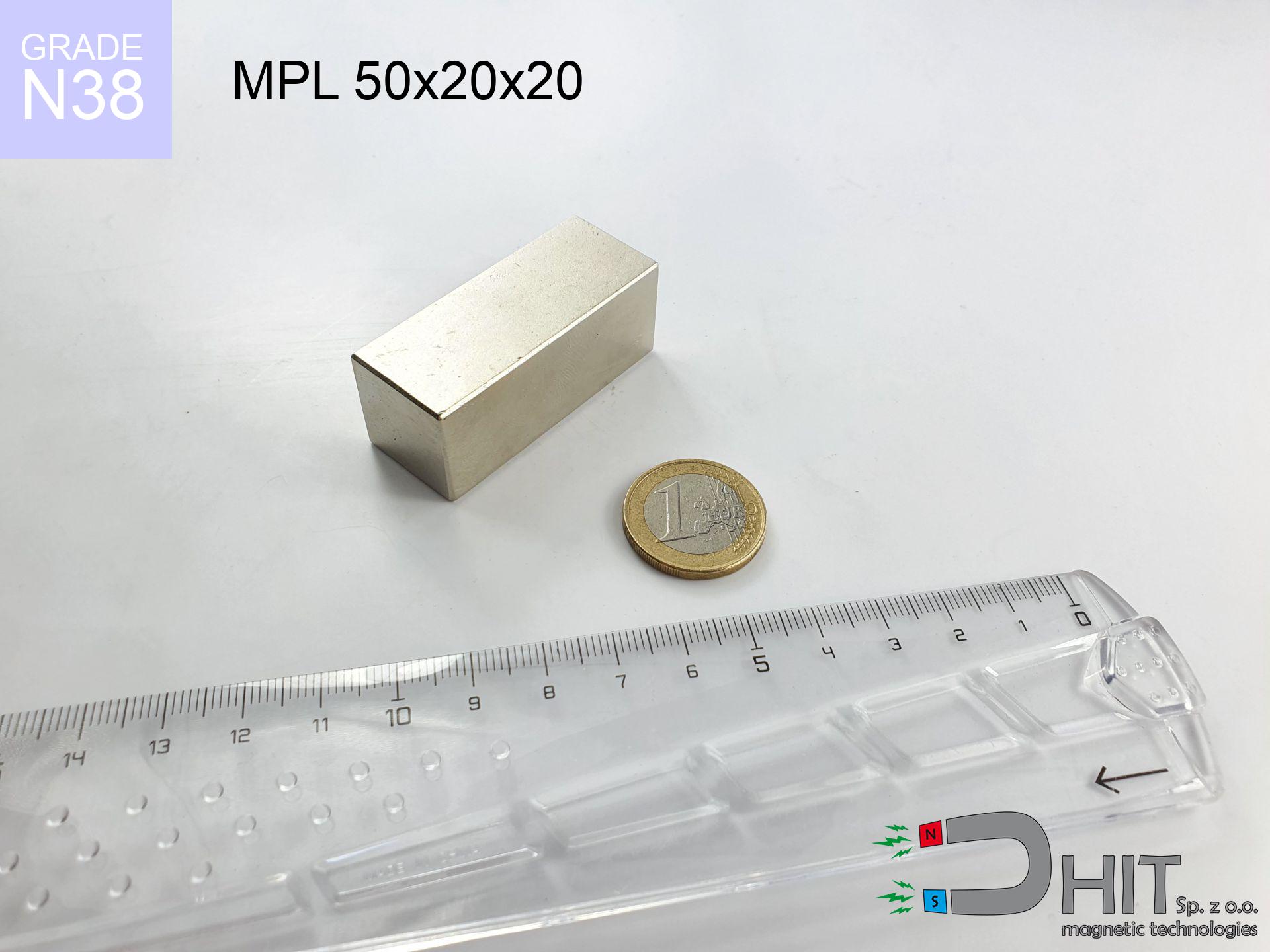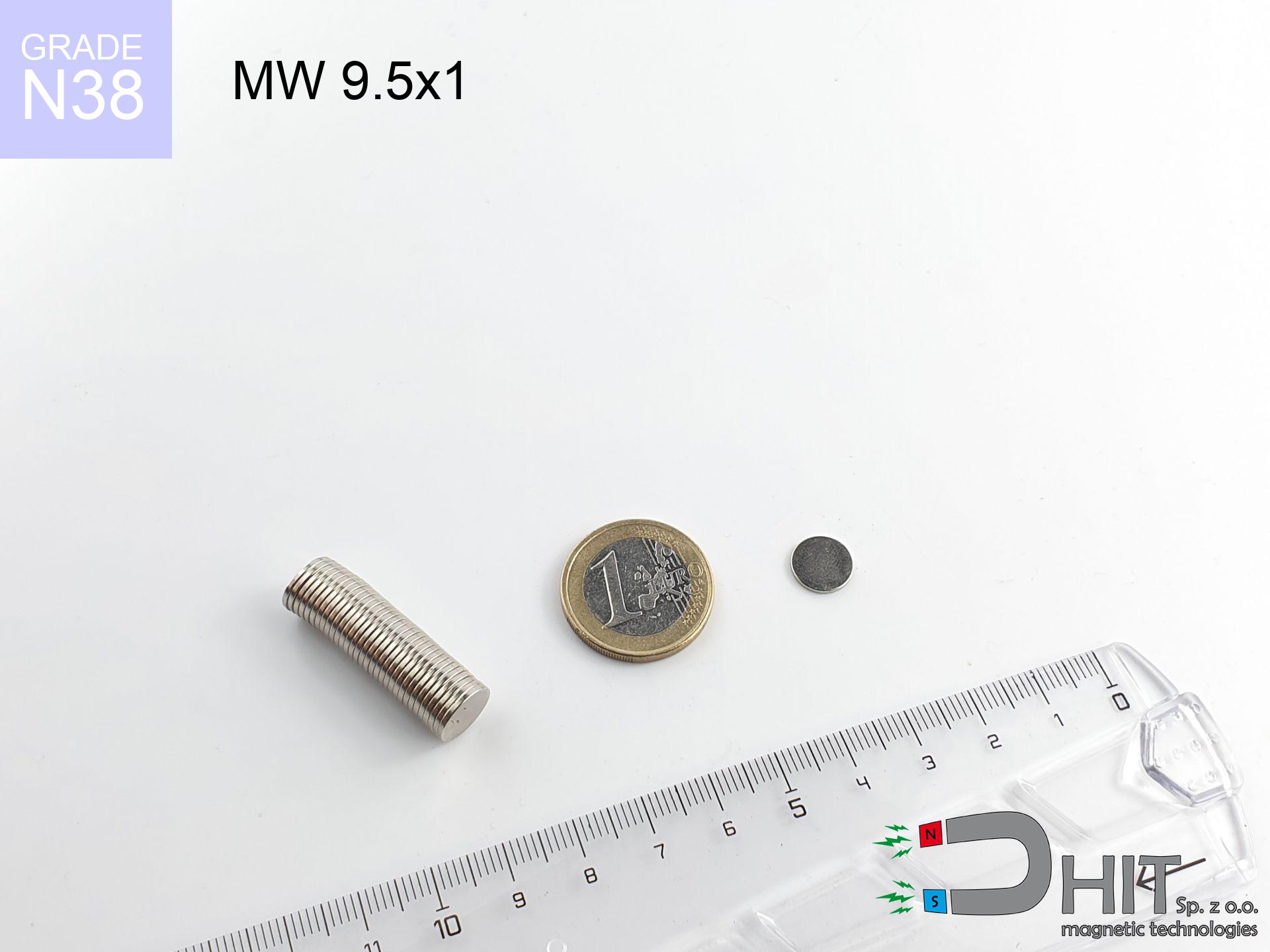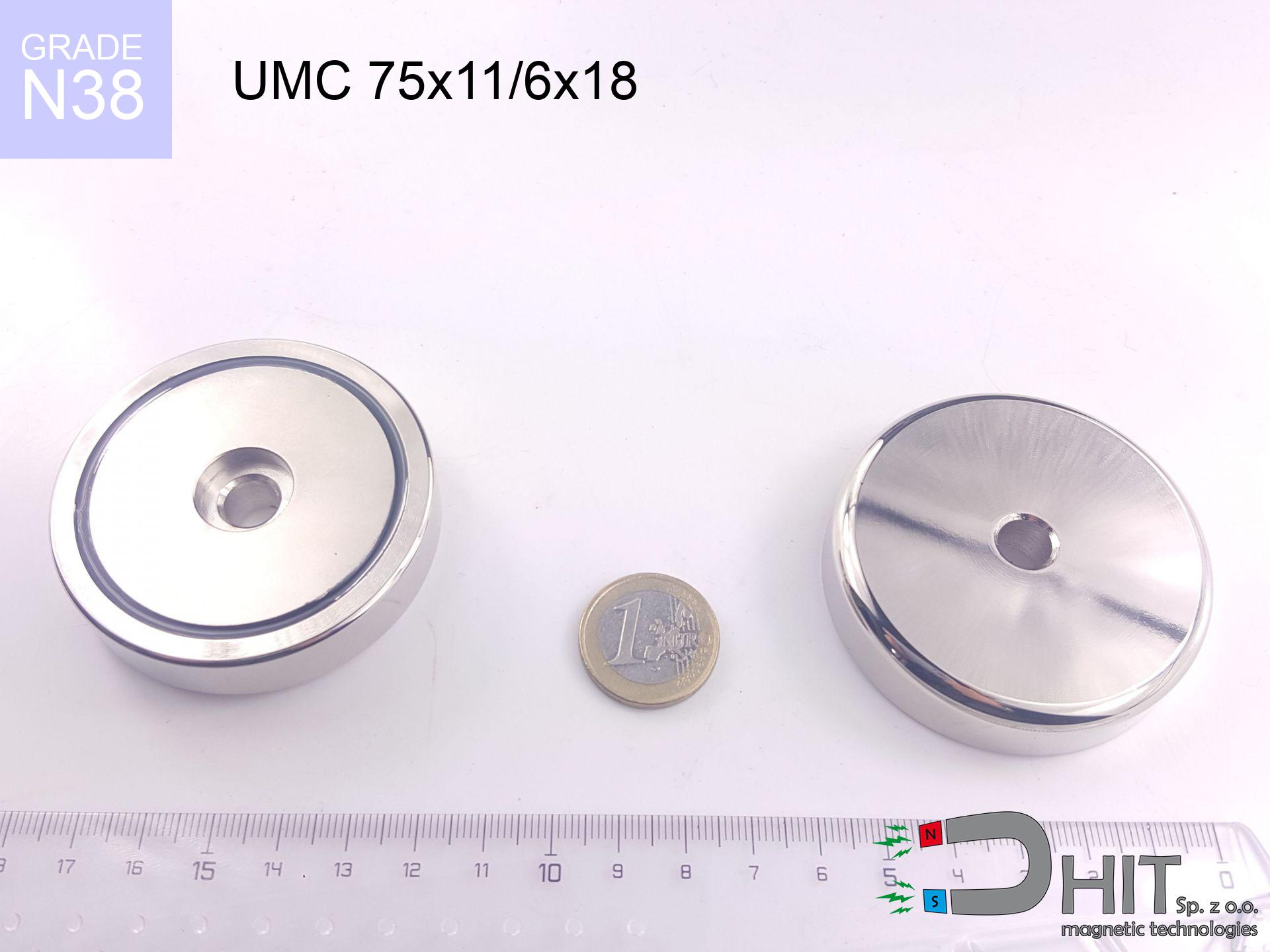MPL 50x20x20 / N38 - neodymium magnet
lamellar magnet
catalog number 020166
GTIN: 5906301811725
length
50
mm [±0,1 mm]
width
20
mm [±0,1 mm]
height
20
mm [±0,1 mm]
magnetizing direction
↑ axial
capacity ~
49.94 kg / 489.74 N
magnetic induction ~
478.99 mT / 4,790 Gs
max. temperature
≤ 80
°C
catalog number 020166
GTIN: 5906301811725
length
50 mm [±0,1 mm]
width
20 mm [±0,1 mm]
height
20 mm [±0,1 mm]
magnetizing direction
↑ axial
capacity ~
49.94 kg / 489.74 N
magnetic induction ~
478.99 mT / 4,790 Gs
max. temperature
≤ 80 °C
49.00 ZŁ gross price (including VAT) / pcs +
39.84 ZŁ net price + 23% VAT / pcs
bulk discounts:
need more quantity?Don't know what to choose?
Give us a call tel: +48 22 499 98 98 or contact us through contact form on the contact page. You can check the lifting capacity as well as the appearance of neodymium magnets in our force calculator magnetic calculator
Orders placed by 2:00 PM will be shipped on the same business day.
Specification: lamellar magnet 50x20x20 / N38 ↑ axial
Magnetic properties of the material N38
Physical properties of sintered neodymium magnets Nd2Fe14B
Thanks to their mighty power, flat magnets are regularly applied in products that need strong holding power.
The standard temperature resistance of flat magnets is 80°C, but with larger dimensions, this value grows.
In addition, flat magnets often have different coatings applied to their surfaces, e.g. nickel, gold, or chrome, to improve their corrosion resistance.
The magnet labeled MPL 50x20x20 / N38 and a magnetic force 49.94 kg weighing a mere 150.00 grams, making it the excellent choice for applications requiring a flat shape.
Contact surface: Thanks to their flat shape, flat magnets ensure a larger contact surface with adjacent parts, which is beneficial in applications requiring a stronger magnetic connection.
Technology applications: These magnets are often applied in different devices, such as sensors, stepper motors, or speakers, where the thin and wide shape is necessary for their operation.
Mounting: This form's flat shape simplifies mounting, especially when there's a need to attach the magnet to another surface.
Design flexibility: The flat shape of the magnets gives the possibility designers a lot of flexibility in arranging them in devices, which is more difficult with magnets of more complex shapes.
Stability: In certain applications, the flat base of the flat magnet may offer better stability, minimizing the risk of shifting or rotating. It’s important to keep in mind that the optimal shape of the magnet depends on the specific application and requirements. In certain cases, other shapes, like cylindrical or spherical, may be more appropriate.
Magnets have two poles: north (N) and south (S), which attract each other when they are different. Similar poles, such as two north poles, repel each other.
Due to these properties, magnets are often used in magnetic technologies, such as motors, speakers, sensors, or magnetic locks. Neodymium magnets stand out with the highest power of attraction, making them indispensable for applications requiring strong magnetic fields. Moreover, the strength of a magnet depends on its size and the material it is made of.
It should be noted that high temperatures can weaken the magnet's effect. The Curie temperature is specific to each type of magnet, meaning that once this temperature is exceeded, the magnet stops being magnetic. Interestingly, strong magnets can interfere with the operation of devices, such as navigational instruments, credit cards or medical equipment, like pacemakers. Therefore, it is important to exercise caution when using magnets.
Recommended articles for purchase
Advantages as well as disadvantages of neodymium magnets NdFeB.
Apart from immense strength, neodymium magnets have the following advantages:
- They do not lose their strength (of the magnet). After about 10 years, their power decreases by only ~1% (theoretically),
- They are highly resistant to demagnetization by external magnetic sources,
- By applying a shiny coating of nickel, gold, or silver, the element gains an aesthetic appearance,
- They have very high magnetic induction on the surface of the magnet,
- By using an appropriate combination of materials, they can achieve significant thermal resistance, allowing them to operate at temperatures up to 230°C and above...
- Due to the option of accurate forming and adaptation to individual needs – neodymium magnets can be produced in a wide range of shapes and sizes, which amplifies their universality in usage.
- Significant importance in the industry of new technologies – find application in HDD drives, electric drive mechanisms, medical apparatus or very advanced devices.
Disadvantages of neodymium magnets:
- They are prone to breaking as they are fragile when subjected to a powerful impact. If the magnets are exposed to impacts, it is suggested using magnets in a protective case. The steel housing in the form of a holder protects the magnet from impacts and simultaneously increases its overall strength,
- Magnets lose their strength due to exposure to high temperatures. In most cases, when the temperature exceeds 80°C, these magnets experience permanent loss in strength (although it is worth noting that this is dependent on the shape and size of the magnet). To avoid this problem, we offer special magnets marked with the [AH] symbol, which exhibit high temperature resistance. They can operate even at temperatures as high as 230°C or more,
- Due to their susceptibility to corrosion in a humid environment, we suggest using waterproof magnets made of rubber, plastic, or other moisture-resistant materials when using them outdoors,
- The use of a cover - a magnetic holder is recommended due to the limited production capabilities of creating threads or complex shapes in the magnet
- Potential hazard arising from small pieces of magnets can be dangerous, when accidentally ingested, which becomes significant in the context of child safety. Furthermore, small elements of these products are able to hinder the diagnostic process in case of swallowing.
Safety Precautions
Never bring neodymium magnets close to a phone and GPS.
Neodymium magnets are a source of strong magnetic fields that cause interference with magnetometers and compasses used in navigation, as well as internal compasses of smartphones and GPS devices.
Neodymium magnetic are highly susceptible to damage, resulting in shattering.
In the event of a collision between two neodymium magnets, it can result in them getting chipped. Despite being made of metal and coated with a shiny nickel plating, they are not as hard as steel. At the moment of collision between the magnets, small sharp metal fragments can be propelled in various directions at high speed. Eye protection is recommended.
Neodymium Magnets can attract to each other due to their immense internal force, causing the skin and other body parts to get pinched and resulting in significant injuries.
Magnets will bounce and contact together within a distance of several to around 10 cm from each other.
Neodymium magnets can demagnetize at high temperatures.
Despite the general resilience of magnets, their ability to maintain their magnetic potency can be influenced by factors like the type of material used, the magnet's shape, and the intended purpose for which it is employed.
Neodymium magnets should not be in the vicinity youngest children.
Not all neodymium magnets are toys, so do not let children play with them. Small magnets pose a serious choking hazard or can attract to each other in the intestines. In such cases, the only solution is to undergo surgery to remove the magnets, and otherwise, it can even lead to death.
Neodymium magnets are the most powerful magnets ever invented. Their strength can surprise you.
Read the information on our website on how to properly utilize neodymium magnets and avoid significant harm to your body and unintentional damage to the magnets.
People with pacemakers are advised to avoid neodymium magnets.
Neodymium magnets produce strong magnetic fields that can interfere with the operation of a heart pacemaker. However, if the magnetic field does not affect the device, it can damage its components or deactivate the device when it is in a magnetic field.
You should keep neodymium magnets at a safe distance from the wallet, computer, and TV.
Strong fields generated by neodymium magnets can damage magnetic storage media such as floppy disks, credit cards, magnetic ID cards, cassette tapes, video tapes, or other similar devices. They can also damage televisions, VCRs, computer monitors, and CRT displays. You should especially avoid placing neodymium magnets near electronic devices.
If you have a nickel allergy, avoid contact with neodymium magnets.
Studies clearly indicate a small percentage of people who suffer from metal allergies such as nickel. An allergic reaction often manifests as skin redness and rash. If you have a nickel allergy, you can try wearing gloves or simply avoid direct contact with nickel-plated neodymium magnets.
Dust and powder from neodymium magnets are highly flammable.
Avoid drilling or mechanical processing of neodymium magnets. If the magnet is crushed into fine powder or dust, it becomes highly flammable.
In order to illustrate why neodymium magnets are so dangerous, see the article - How dangerous are strong neodymium magnets?.




![magnetic beam 850x180x70 [4x M8] magnetic beam 850x180x70 [4x M8]](https://cdn3.dhit.pl/graphics/products/bm-850x180x70-4x-m8-mep.jpg)

![magnetic holder internal thread 32x18x8 [M6] GW / N38 magnetic holder internal thread 32x18x8 [M6] GW / N38](https://cdn3.dhit.pl/graphics/products/um32x18x8-m6-gw--hec.jpg)


